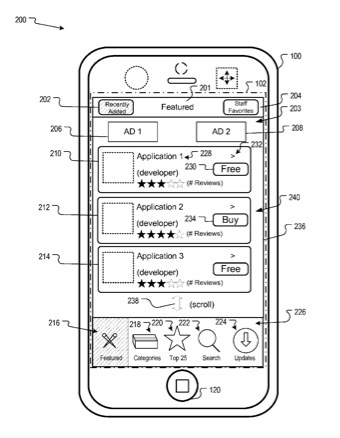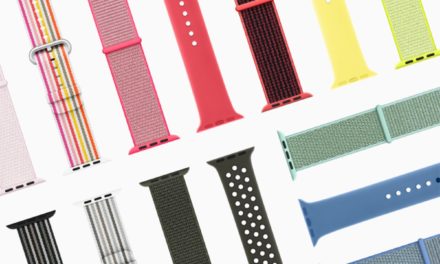A new Apple patent (20120117504) for an user interface for application management on mobile devices has appeared at the U.S. Patent & Trademark Office.
It describes technologies relating to user interfaces for mobile devices. In general, one aspect of the subject matter described in this specification can be embodied in methods that include the actions of receiving a touch input to access an application management interface on a mobile device; presenting an application management interface; receiving one or more inputs within the application management interface including an input to install a particular application; installing the selected application; and presenting the installed application.
Here’s Apple’s summary of the invention: “Conventional mobile devices are often dedicated to performing specific functions. For example, a mobile phone provides telephony services, a personal digital assistant (PDA) provides a way to organize addresses, contacts and notes, a media player plays content, email devices provide email communication, a browser to surf the Internet, etc. Modern mobile devices can include two or more of these functions.
“In particular, a mobile device can include a number of different applications, which a user can access independent of other applications. For example, the mobile device can include one or more games, web applications, or productivity applications.”
The inventors are Steve Lemay and Sean Kelly.
Other patents appearing today at the U.S. Patent & Trademark Office include:
Patent number 20120124366 involves a system and method for a derivation function for key per page. It’s for systems, methods and computer-readable media to perform data encryption and decryption using a derivation function to obtain a key per page of data in a white-box environment. The inventors are Mathieu Ciet, Augustin J. Farrugia and Filip Toma Paun.
Patent number 20120120562 involves unitary house for an electronic device. The device can include a first housing component having an open cavity, an internal electronic part disposed within the cavity, a second housing component disposed across the cavity, and a support feature disposed within the cavity and arranged to support the second housing component. The first housing component can be formed from metal, while the second housing component can be formed from a plurality of laminated foil metal layers. The second housing component can be attached to the first housing component via one or more ultrasonic welds, such that a fully enclosed housing is created. The fully enclosed housing can be hermetically sealed, and the outside surfaces thereof can be machined or otherwise finished after the ultrasonic welding. The inventors are Christopher D. Prest, Stephen P. Zadesky, Trent Weber and Lucy E. Browning.
Patent number 20120121096 for intelligibility control using ambient noise detection. A communications device is configured to control the intelligibility of speech in a downlink voice signal during a call. The device determines a current noise level based on sampling ambient acoustic noise and based on a previously determined noise level. The device then determines an overall output gain and a frequency response based on the current noise level and based on a user-selected volume setting of the device. The device modifies the downlink voice signal during the call in accordance with the determined overall output gain and the determined frequency response. The inventors are Shaohai Chen, Guy C. Nicholson and Bruce C. Po.
Patent number 20120121178 involves an image representation method and apparatus. Per the patent, a color image comprises color values in each of one or more color channels for each of a plurality of points, or pixels, within the image. The image is represented by rank ordering the values in each color channel. The image representation generated in this way is usable for automated-vision or computer-vision tasks, for example. Graham Finlayson is the inventor.



